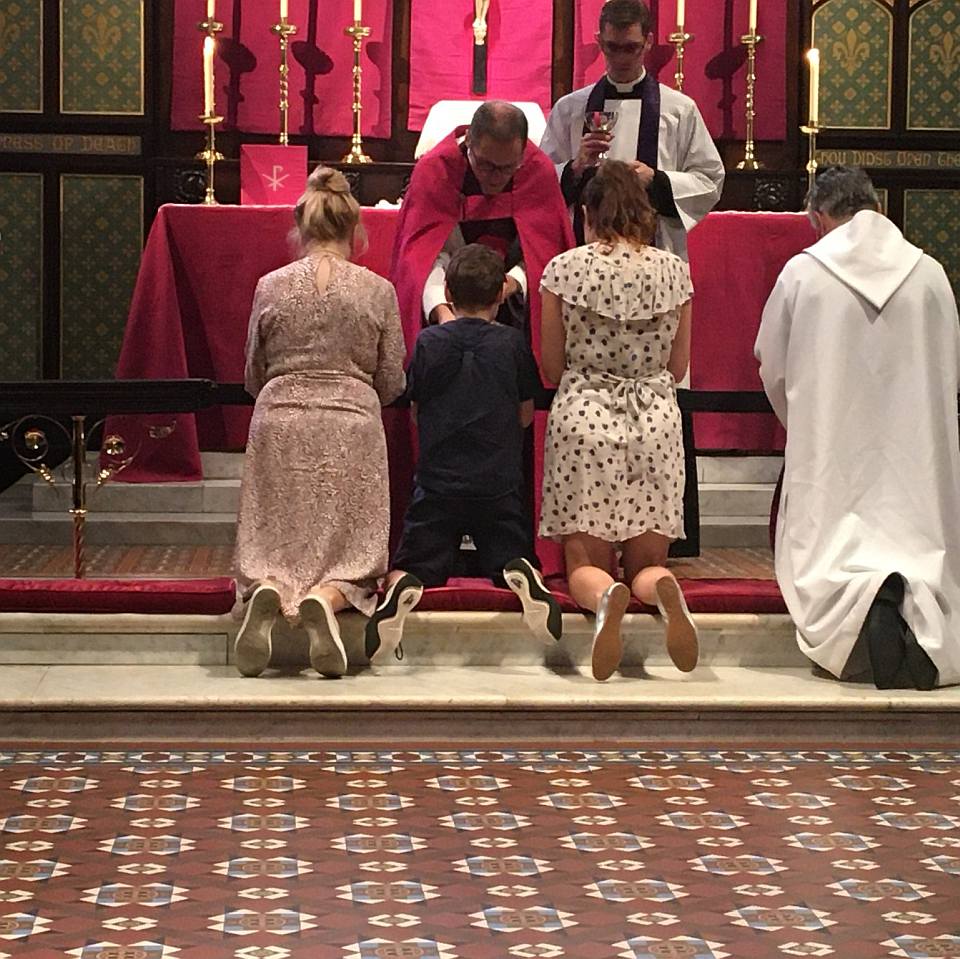
Rose Vestments
Lent 4, the 4th Sunday of Lent, is also known as Refreshment Sunday or Mothering Sunday and is also called Laetare Sunday.
For some, this comes as a bit of a surprise, however, in the earlier rites the introit or entrance sentence for the day came from Issaiah 66:10-11
Rejoice with Jerusalem, and be glad for her,
all you who love her;
rejoice with her in joy,
all you who mourn over her—
that you may nurse and be satisfied
from her consoling breast;
that you may drink deeply with delight
from her glorious bosom.
The Latin word for rejoice here was Laetare, which is how this Sunday got that name.
It was also a day of minor reprieve from the austerity of Lent, clearly associated with the tradition of Simnel Cake, often handed out on this day.
It was often a day when folk would travel to their homes, and their home parishes, and so became called Mothering Sunday, in association with visiting Mothers, or Mother’s Graves, or the Mother Church from which people were baptised.
This year in some parts of the Parish people saw the clergy in Rose (pink) Vestments and some people observed that they had never seen that before.
Some parts of Anglicanism refrain from using liturgical colours, which in the main people have been used to four or five colours, (Purple, Green, Red, and White/Gold). Some of us have also seen the use of Black Vestments, as were used for the funeral of Queen Elizabeth II last year.
The Orthodox Eastern Christians use a great deal of colour, though not in the seasonal way that Christians in the West do.
The early Sarum rites (Old English / Celtic) made a great deal of the use of colours in the liturgy. It is most probable that following the Augustinian MIssion to England the use of liturgical colour made its way back to Rome and Europe more generally. The Sarum Colour for Advent was the deep ashen blue of the night sky. The Third Sunday of Advent, Gaudate Sunday was called also for the Introit from Philippians 4:4-7
Rejoice in the Lord always; again I will say, Rejoice. Let your gentleness be known to everyone. The Lord is near. Do not worry about anything, but in everything by prayer and supplication with thanksgiving let your requests be made known to God. And the peace of God, which surpasses all understanding, will guard your hearts and your minds in Christ Jesus.
The Latin word here for rejoice was Gaudete, which is how this Sunday got that name.
The colour of the day in the Sarum rite was Rose, and seen as the promise of the sunrise against the night sky, as we observe if we are up that late, or that early, just before the dawn arrives. The use of Rose on Laetere Sunday seems to be a transference of that same logic to the minor relaxation of the Lenten Fast.
So the use of Rose Vestments is not a new thing, nor is it un-Anglican, but rather firmly part of the historic tradition in which we stand that goes back well before Augustine set foot on English soil.
Rose vestments should remind us that the dawn is coming, the Resurrection is around the corner, and we are called to live as people of hope.
